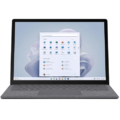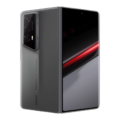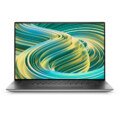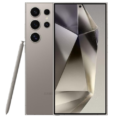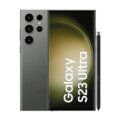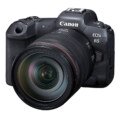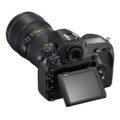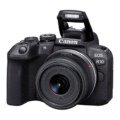- Home
- All Device
- Compare
- Clash of Titans: Samsung Galaxy Fold 5 vs HONOR Magic V2
Clash of Titans: Samsung Galaxy Fold 5 vs HONOR Magic V2
Clash of Titans
The foldable smartphone revolution has ushered in a new era of innovation, with Samsung’s Galaxy Fold 5 and HONOR’s Magic V2 standing at the forefront. These two technological marvels promise a unique blend of design, performance, and features. In this detailed specification comparison, we’ll dissect their capabilities to help you decide which foldable titan is the one for you.
Design and Build:
HONOR Magic V2: Dimensions play a crucial role in foldable phones, and the HONOR Magic V2 brings versatility with its unfolded dimensions of 156.7 x 145.4 x 4.7 mm and folded dimensions ranging from 9.9 to 10.1 mm, depending on the version. The device’s build includes a glass front and back or eco-leather back, a magnesium alloy frame, and a titanium alloy folding mechanism, providing a sturdy yet stylish construction.
Samsung Galaxy Fold 5: Meanwhile, the Samsung Galaxy Fold 5 showcases a compact form when folded (154.9 x 67.1 x 13.4 mm) and unfolds to reveal a larger display (154.9 x 129.9 x 6.1 mm). Its construction features Gorilla Glass Victus, aluminum frame, and IPX8 water resistance, enhancing durability and resilience.
Display:
HONOR Magic V2: The Magic V2 boasts a Foldable LTPO OLED Display spanning 7.92 inches, offering a canvas for vibrant visuals with 2344×2156 pixels. Additionally, it features a secondary LTPO OLED display of 6.43 inches with 120Hz refresh rate, catering to convenience and functionality.
Samsung Galaxy Fold 5: Samsung’s Fold 5 incorporates a Foldable Dynamic AMOLED 2X display, standing at 7.6 inches with a resolution of 2176 x 1812 pixels. Its secondary Dynamic AMOLED 2X display measures 6.2 inches, emphasizing a seamless transition between folded and unfolded states.
Performance:
HONOR Magic V2: Under the hood, the Magic V2 is powered by the Qualcomm Snapdragon 8 Gen 2 chipset, featuring an octa-core CPU and Adreno 740 GPU. With a whopping 16GB of RAM and storage options of 256GB or 512GB, the Magic V2 promises a powerhouse performance for multitasking and storage-intensive tasks.
Samsung Galaxy Fold 5: The Galaxy Fold 5, equipped with the Qualcomm Snapdragon 8 Gen 2, follows suit with an octa-core CPU and Adreno 740 GPU. With a slightly lower RAM at 12GB, it still offers ample power for smooth multitasking. Storage options range from 256GB to 1TB, utilizing UFS 4.0 for faster data access.
Camera:
HONOR Magic V2: The Magic V2’s camera setup includes a versatile 50MP primary camera, 20MP telephoto with 2.5x optical zoom, and a 50MP ultrawide lens. The device boasts advanced features like 40x digital zoom, HDR, and 4K video recording capabilities.
Samsung Galaxy Fold 5: The Fold 5 doesn’t disappoint in the camera department, featuring a 50MP primary camera, 10MP telephoto with 3x optical zoom, and a 12MP ultrawide lens. It supports 8K video recording and features a unique under-display 4MP camera for cover shots.
Connectivity and Battery:
Both devices offer a comprehensive set of connectivity options, including 5G support, Wi-Fi 6E, USB Type-C, and NFC. While the Magic V2 features HONOR 66W Supercharge with a 5000mAh battery, the Galaxy Fold 5 relies on a 4400mAh battery with 25W wired and 15W wireless charging capabilities.
In this clash of titans, the HONOR Magic V2 and Samsung Galaxy Fold 5 bring forth a myriad of features and cutting-edge technology. The decision between them hinges on your priorities—whether it’s the impressive camera setup, robust performance, or unique design elements. The future of smartphones unfolds before us, and these foldable contenders pave the way for a thrilling technological journey.

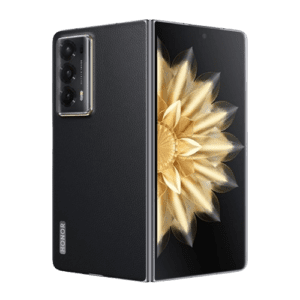
| |
| Price | Device Device |
| Our Rating | |
| Brand | Samsung Honor |
| Category | Smartphone Smartphone |
General
| Device Type | Smartphone Smartphone |
| Model | Galaxy Z Fold5 Magic V2 |
| Announced | July, 2023 July, 2023 |
| Released | August, 2023 July, 2023 |
| Status | Available Available |
Design
| Type Design Type called form factor refers to a mobile phone's size, shape, and style as well as the layout and position of major components of phone. There are three major form factors seen in mobile phones => bar phones, folding phones and sliding phones. | Folding Folding |
| Dimensions | Unfolded: 154.9 x 129.9 x 6.1 mm, Folded: 154.9 x 67.1 x 13.4 mm Unfolded: 156.7 x 145.4 x 4.7 mm or 4.8 mm, Folded: 156.7 x 74.1 x 9.9 mm or 10.1 mm |
| Weight | 253 g PU Version: 231 g, Glass Version: 237 g |
| Protection |
Glass front (Gorilla Glass Victus 2) (folded), plastic front (unfolded), glass back (Gorilla Glass Victus 2), aluminum frame, IPX8 water resistant (up to 1.5m for 30 min) Armor aluminum frame with tougher drop and scratch resistance (advertised) Stylus support Glass front, glass back or eco leather back, magnesium alloy frame, titanium alloy folding mechanism |
| Colors | Icy Blue, Phantom Black, Cream, Gray, Blue Black, Silk Black, Silk Purple, Gold |
Network
| 2G Network |
GSM850, GSM900, DCS1800, PCS1900
GSM 850 / 900 / 1800 / 1900 - SIM 1 & SIM 2 CDMA 800 |
| 3G Network |
B1(2100), B2(1900), B4(AWS), B5(850), B8(900)
HSDPA 800 / 850 / 900 / 1700(AWS) / 1900 / 2100 CDMA2000 1x |
| 4G Network |
B1(2100), B2(1900), B3(1800), B4(AWS), B5(850), B7(2600), B8(900), B12(700), B13(700), B17(700), B18(800), B19(800), B20(800), B25(1900), B26(850), B28(700), B66(AWS-3) B38(2600), B39(1900), B40(2300), B41(2500) 1, 2, 3, 4, 5, 7, 8, 12, 17, 18, 19, 20, 26, 28, 34, 38, 39, 40, 41, 66 |
| 5G Network |
N1(2100), N2(1900), N3(1800), N5(850), N7(2600), N8(900), N12(700), N20(800), N25(1900), N28(700), N66(AWS-3) N38(2600), N40(2300), N41(2500), N77(3700), N78(3500) 1, 3, 5, 8, 28, 38, 41, 77, 78 SA/NSA |
| Data Speed | 2G GSM, 3G WCDMA, 4G LTE FDD, 4G LTE TDD, 5G Sub6 FDD, 5G Sub6 TDD HSPA, LTE-A, 5G |
| SIM SIM (Subscriber Identity Module) is a small card that contains mobile network subscriber's account information. This allows the phone using the card to attach to a mobile network. The SIM card is most commonly associated with GSM and UMTS mobile networks. Moving a SIM card from one phone to another allows a subscriber to switch mobile phones without having to contact their mobile network carrier. SIM cards can also be used by a phone to store limited amounts of data, such as phone numbers and text messages. | Nano SIM Nano SIM |
| Dual SIM | Nano-SIM and eSIM or Dual SIM (2 Nano-SIMs and eSIM, dual stand-by) Nano-SIM, eSIM or Dual SIM (Nano-SIM, dual stand-by) |
Display
| Display Type Display Technology => A number of display technologies and types used in mobile phones => TFT (Thin Film Transistor), IPS (In-Place Switching), OLED (Organic Light Emitting Diode), AMOLED (Active-Matrix Organic Light-Emitting Diode), Super AMOLED (an even advanced version of AMOLED), Resistive Touchscreen (Resistive touchscreens contain two layer of conductive material with a very small gap between them which acts as a resistance), Capacitive Touchsceen (Capacitive touchscreen technology consists of a layer of glass coated with a transparent conductor) | Foldable Dynamic AMOLED 2X Foldable LTPO OLED Display |
| Size | 7.6 inches, 183.2 cm2 (~91.1% screen-to-body ratio) 7.92 inches |
| Resolution | 2176 x 1812 (QXGA+) 2344x2156 Pixels |
| Display Colors Display Colors is refers to the number of different shades of colors that the screen is capable of displaying => 64K colors, 256K colors and 16 million colors, Obviously 16M is highest available range of colors and better than others. | 16M 1.07 billion colors, DCI-P3 wide color gamut |
| Touch Screen | Gestures Supported |
| Features |
120Hz, HDR10+
120Hz, HDR10+, IMAX Enhanced, 1600 nits (peak) 9.78:9 Aspect Ratio |
| Secondary Display | Dynamic AMOLED 2X, 120Hz, Corning Gorilla Glass Victus 2 6.2 inches, 904 x 2316 pixels, 23.1:9 ratio LTPO OLED, 1B colors, 120Hz, HDR10+, 2500 nits, 6.43 inches, 1060 x 2376 pixels, 402 ppi, nanocrystal glass 2.0 |
Media
| Audio Playback | MP3, M4A, 3GA, AAC, OGG, OGA, WAV, AMR, AWB, FLAC, MID, MIDI, XMF, MXMF, IMY, RTTTL, RTX, OTA, DFF, DSF, APE |
| Video Playback | MP4, M4V, 3GP, 3G2, AVI, FLV, MKV, WEBM |
| Video Out | UHD 8K (7680 x 4320)@60fps |
| FM Radio | No No |
| Loudspeaker | Yes, with stereo speakers Yes, with stereo speakers |
| Handsfree | USB Type-C |
Camera
| Primary Camera is able to capture photographs and usually videos, The most important characteristics of a camera are the resolution (measured in megapixels), lens focus type (fixed or automatic), higher megapixel cameras are known to capture higher quality photos, but not always a good measurement of the photos quality. | 50 MP 50MP |
| Image | HDR, panorama 8192×6144 pixels |
| Video | 8K@30fps, 4K@60fps, 1080p@60/240fps (gyro-EIS), 720p@960fps (gyro-EIS), HDR10+ 4K@30/60fps (10-bit), 1080p@30/60fps, gyro-EIS, HDR10+, OIS |
| Camera Features |
50 MP, f/1.8, 23mm (wide), 1.0µm, Dual Pixel PDAF, OIS 10 MP, f/2.4, (telephoto), PDAF, OIS, 3x optical zoom 12 MP, f/2.2, 123˚, 12mm (ultrawide), 1.12µm 50 MP, f/1.9, (wide), PDAF, 8x8 dToF Laser AF, OIS 20 MP, f/2.4, 62mm (telephoto), PDAF, 2.5x optical zoom, OIS 50 MP, f/2.0, 13mm (ultrawide), AF HDR, panorama 40x Digital zoom EIS+OIS |
| Flash Flash Light => There is commonly two types of flash lights are used in camera mobile phones, LED Flash (LED flash offers lower power consumption with drive circuitry that takes up very little room, LEDs can be strobed faster than any other light source), Xenon Flash (xenon flash produces an extremely intense full-spectrum white light for a very short duration) | LED flash LED flash |
| Secondary | 4 MP, f/1.8, 26mm (wide), 2.0µm, under display Cover camera: 10 MP, f/2.2, 24mm (wide), 1/3", 1.22µm, HDR, 4K@30/60fps, 1080p@30/60fps, gyro-EIS 16 MP, f/2.2, (wide), HDR, 4K@30fps, 1080p@30fps, gyro-EIS |
Software
| Operating System OS => Every computer system run on a base software called Operating System (OS). Operating System controls all basic operations of the computer (such as smartphone, PDAs, tablet computers and other handheld devices). The Operating System allows the user to install and run third party applications (apps), apps are used to add new functionality to the device. | Android 13, upgradable to Android 14 Android 13 |
| User Interface UI or user interface of a device is the look and feel of the on-screen menu system. How it works, its color scheme, how it responds to button presses, all of these things are part of the user interface. | One UI 6 MagicOS 7.2 |
| Java Support Java for Mobile Devices is a set of technologies that let developers deliver applications and services to all types of mobile handsets, ranging from price efficient feature-phones to the latest smartphones. Java is currently running on over 3 billion phones worldwide, and growing. It offers unrivaled potential for the distribution and monetization of mobile applications. | Yes Yes |
| Facebook Facebook is a popular free social networking website that allows registered users to create profiles, upload photos and video, send messages and keep in touch with friends, family and colleagues. The site is available in 37 different languages. | |
| Youtube Youtube is a popular free video-sharing website, Youtube is the largest video sharing site in the world, Millions of users around the world have created accounts on the site that allow them to upload videos that anyone can watch. |
Hardware
| Chipset Chipset is a group of integrated circuits designed to perform one or a more dedicated functions, often with real time computing constraints, Popular smartphones are equipped with more advanced embedded chipsets that can do many different tasks depending on their programming. | Qualcomm Snapdragon 8 Gen 2 (4 nm) Qualcomm Snapdragon 8 Gen 2 |
| CPU CPU (Central Processing Unit) mostly known as processors, CPU processes instructions in order to carry out certain functions that make your device operate properly. Processors are often described as the brain of computers, smartphones and tablets, Smartphones and tablets rely on processors to carry out their every task, Processors are an incredibly important factor in selecting any type of computing device, including your smartphone. | Octa-core (1x3.36 GHz Cortex-X3 & 2x2.8 GHz Cortex-A715 & 2x2.8 GHz Cortex-A710 & 3x2.0 GHz Cortex-A510) Octa-core (1x3.19 GHz (INTL) / 1x3.36 GHz (CN) Cortex-X3 & 2x2.8 GHz Cortex-A715 & 2x2.8 GHz Cortex-A710 & 3x2.0 GHz Cortex-A510) |
| GPU GPU (Graphics Processing Unit) is a single-chip processor designed to rapidly manipulate and alter memory to accelerate the creation of images in a frame buffer intended for output to a display, This includes things such as lighting effects, object transformations, and 3D motion. | Adreno 740 Adreno 740 |
| RAM (Memory) RAM (Random Access Memory) is a type of computer memory that can be accessed randomly, any byte of memory can be accessed without touching the preceding bytes that allows information to be stored and accessed quickly from random locations. RAM is the most common type of memory found in computer systems, smartphones, tablets and other electronic devices. | 12 GB 16GB |
| Internal Storage Internal Storage is a data storage space (flash memory) mostly used in smartphones, tablets and other electronic devices where operating system, apps, music, photos, videos, files and other user data Is stored. | 256GB, 512GB, 1TB- UFS 4.0 256GB, 512GB |
| Card Slot Memory Card Slot is a special slot for inserting a memory card. Memory cards allow you to expand the phone's built-in memory, A memory card (sometimes called a flash memory card or a storage card) is a small storage medium used to store data such as text, pictures, audio, and video, for use on small, portable or remote computing devices such as mobile phones, mp3 players, digital cameras. | No No |
| Sensors Sensors are electronic components that detects and responds to some type of input from the physical environment. The specific input could be light, heat, motion, moisture, pressure and location, The output is generally a signal that is converted to use in computing systems, a location sensor, such as a GPS receiver is able to detect current location of your electronic device. |
Accelerometer, Barometer, Fingerprint Sensor, Gyro Sensor, Geomagnetic Sensor, Hall Sensor, Light Sensor, Proximity Sensor Fingerprint (side-mounted) accelerometer gyro proximity compass color spectrum |
Connectivity
| Bluetooth Bluetooth is a wireless communications technology for exchanging data between mobile phones, headsets, computers and other network devices over short distances without wires, Bluetooth technology was primarily designed to support simple wireless networking of personal consumer devices. | 5.3, A2DP, LE, aptX HD 5.3, A2DP, LE, aptX HD |
| Wi-fi Wi-Fi is a popular wireless networking technology using radio waves to provide high-speed network connections that allows devices to communicate without cords or cables, Wi-Fi is increasingly becoming the preferred mode of internet connectivity all over the world. | Wi-Fi 802.11 a/b/g/n/ac/6e, tri-band, Wi-Fi Direct Wi-Fi 802.11 a/b/g/n/ac/6e/7, dual-band, Wi-Fi Direct |
| Wi-fi Hotspot | |
| USB | USB Type-C 3.2, OTG USB Type-C 3.1, OTG, Display Port 1.2 |
| GPS GPS The Global Positioning System is a satellite-based radio navigation system, GPS permits users to determine their position, velocity and the time 24 hours a day, in all weather, anywhere in the world, In order to locate your position, your device or GPS receiver must have a clear view of the sky. | GPS, GLONASS, GALILEO, BDS GPS (L1+L5), GLONASS (L1), BDS (B1I+B1c+B2a), GALILEO (E1+E5a), QZSS (L1+L5) |
| NFC NFC (Near field communication) is a set of standards for smartphones and similar devices to establish peer-to-peer radio communications with each other by touching them together or bringing them into proximity, usually no more than a few inches. |
Data
| GPRS GPRS (General Packet Radio Service) is a packet oriented mobile data service on the 2G and 3G cellular communication system's global system for mobile communications (GSM), Generally, GPRS is used for the purpose of wireless data transfer, such as sharing pictures and videos or browsing the Internet via a mobile phone connection. | |
| EDGE EDGE (Enhanced Data GSM Environment) is a wireless network technology generally considered the next step in the 2G network offers data transfer rates up to four times faster than ordinary GSM networks, Generally, EDGE is used for the purpose of wireless data transfer, such as sharing pictures and videos or browsing the Internet via a mobile phone connection. | |
| Speed | 2G GSM, 3G WCDMA, 4G LTE FDD, 4G LTE TDD, 5G Sub6 FDD, 5G Sub6 TDD Yes |
| Web Browser Web Browser => a web browser is a software application used to locate, retrieve and display content on the World Wide Web, including Web pages, images, video and other files, The primary function of a web browser is to render HTML, the code used to design or markup webpages. | Yes Yes |
Messaging
| SMS SMS (Short Messaging Service) is a text messaging service component of phone, Web, or mobile communication systems. It uses standardized communications protocols to allow mobile phone devices to exchange short text messages over the networks. | Yes Yes |
| MMS MMS (Multimedia Messaging Service) is a standard way to send messages that include multimedia content (audio clips, video clips and images) to and from mobile phones over wireless networks using the WAP protocol. | |
| Email Email (Electronic Mail) is a system for receiving, sending, and storing electronic messages, Similar to a letter, email is text messages that may contain files, images, or other attachments sent via the internet to a recipient by using applications and software prograps. An email address is required to receive email, and that address is unique to the user. | Yes Yes |
| IM IM (Instant Messaging) is an exchange of text messages through a software application, it enable you to create a kind of private chat room with another individual in order to communicate in real time over the Internet. | Yes |
Battery
| Battery Type Battery Type => Cell phones run on various kinds of batteries depending on the manufacturer, phone size or shape and features. There are basically four types of cell phone batteries => Lithium Polymer, Lithium Ion, Nickel Metal Hydride and Nickel Cadmium. | Li-Poly (Lithium Polymer) Silicon-Carbon |
| Capacity Battery Capacity is a measure (typically in Amp-hr) of the charge stored by the battery, and is determined by the mass of active material contained in the battery. The battery capacity represents the maximum amount of energy that can be extracted from the battery under certain conditions. | Li-Poly 4400 mAh, non-removable 5000 mAh |
| Charging Method |
25W wired, 50% in 30 min (advertised) 15W wireless 4.5W reverse wireless
HONOR 66W SuperCharge 5W reverse wired |
| Talk Time Talk Time is the longest time that a single battery charge will last when you are constantly talking on the phone under perfect conditions, Ambient temperature and highly dependent on the cellular network environment such as the distance to the closest cell network tower. | Up to 40 Hours |
| Music Play | Up to 73 Hours |
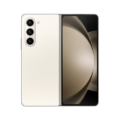

|

